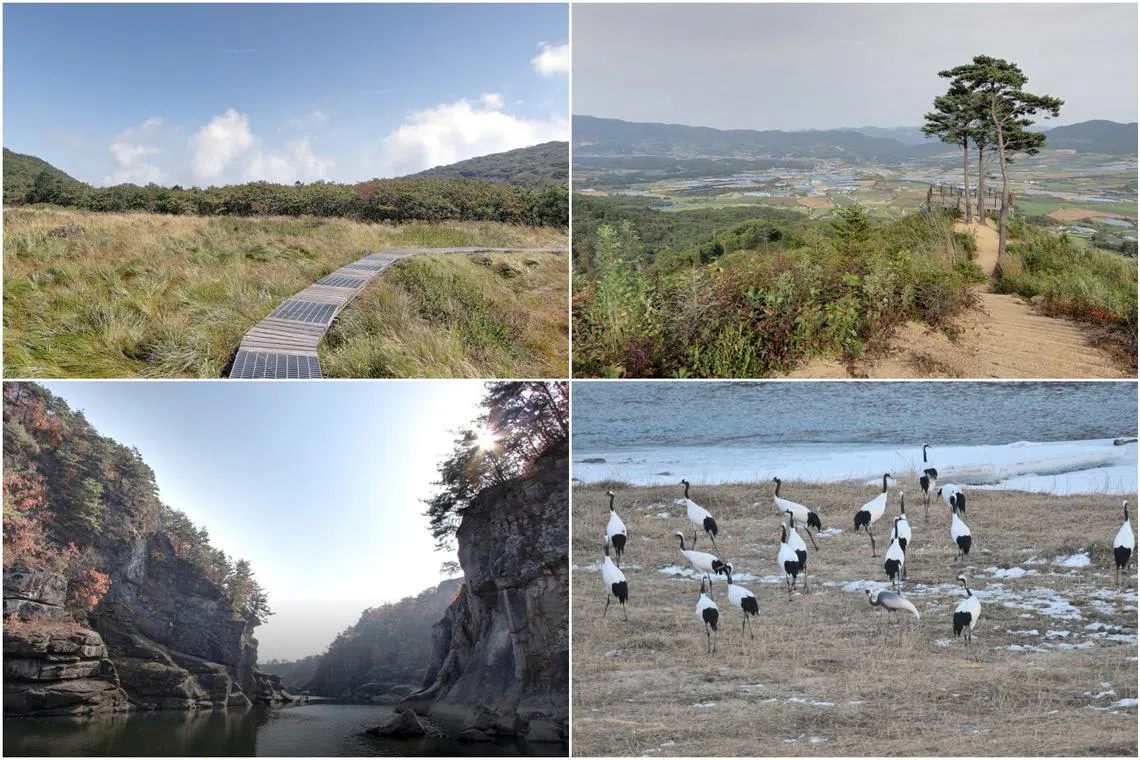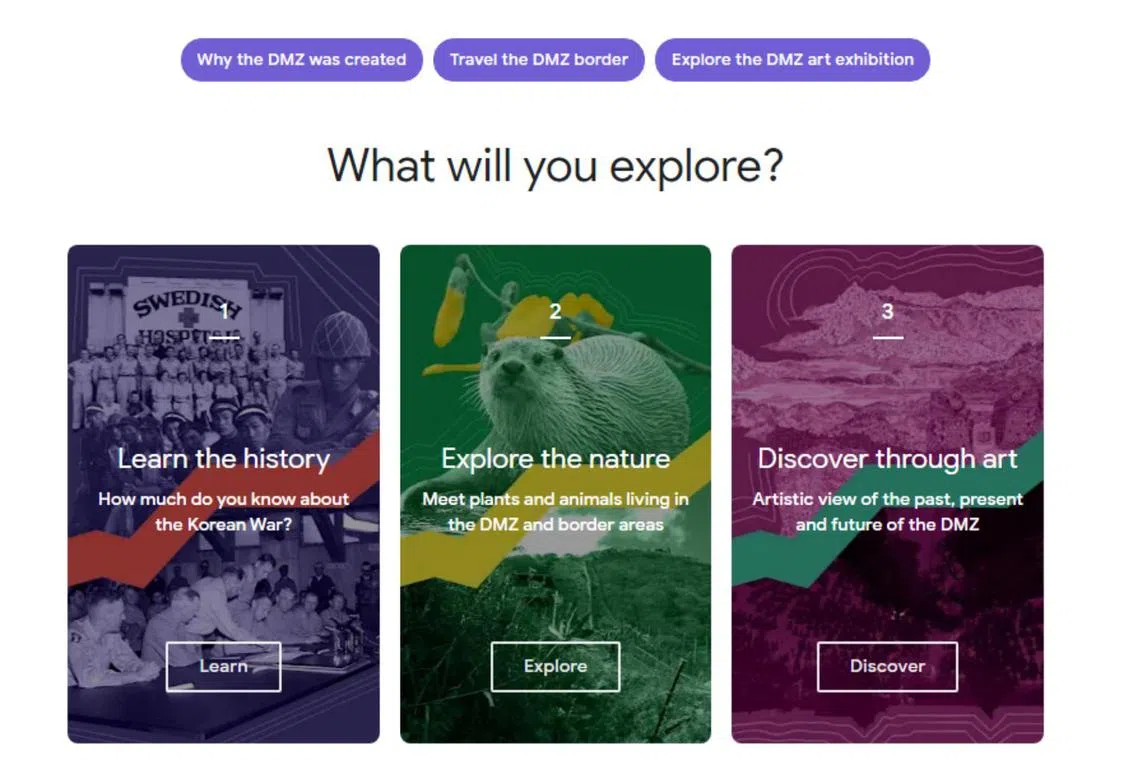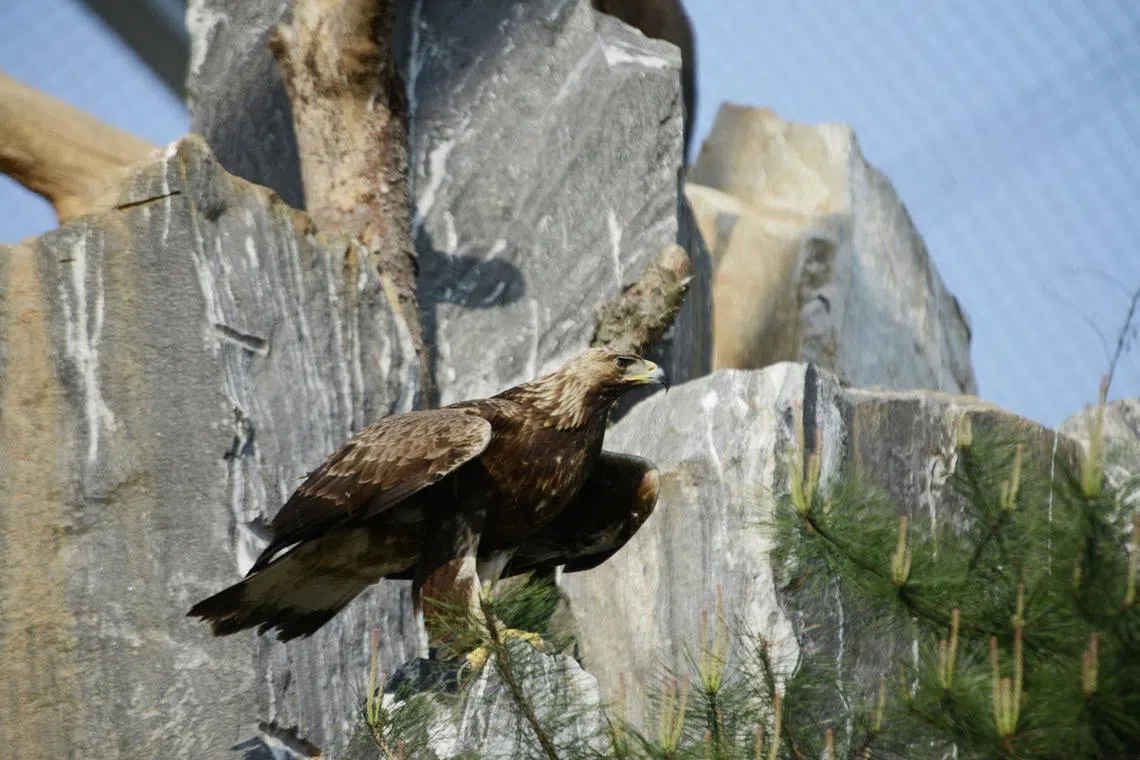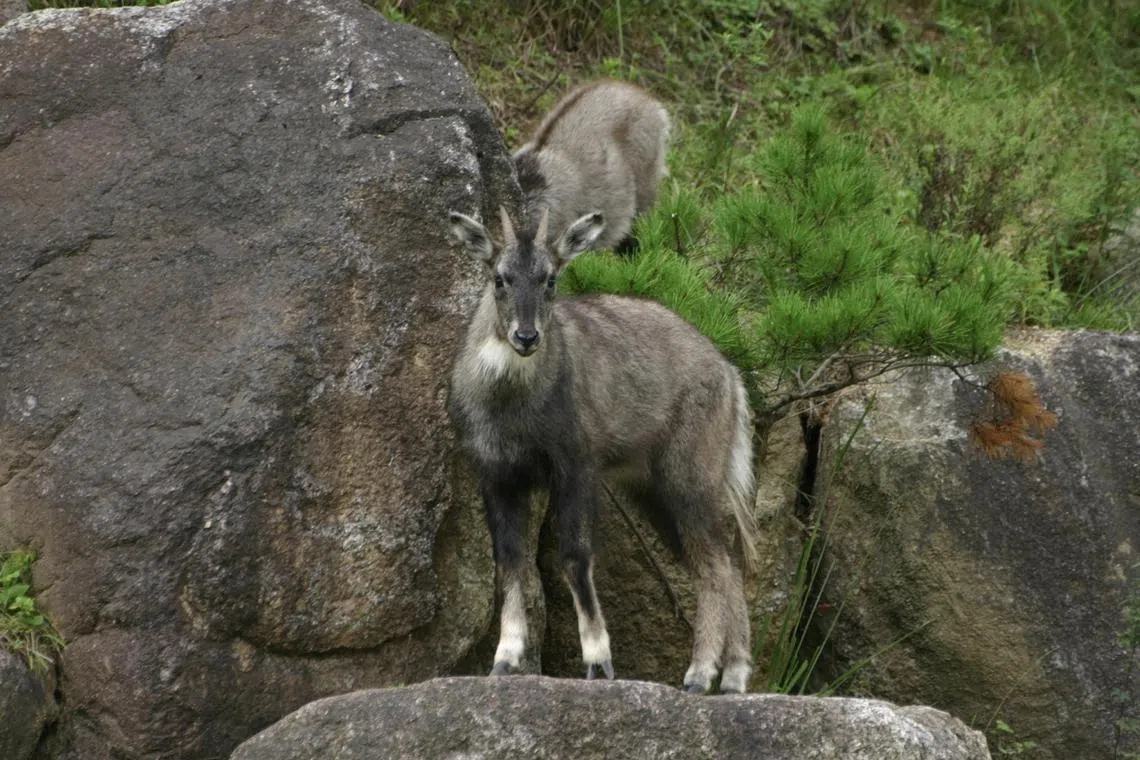Google offers the world a peek into off-limits area near Korean Demilitarised Zone
Sign up now: Get insights on Asia's fast-moving developments

(Clockwise from top left) Yongneup, DMZ Punchbowl Trail, Red-crowned cranes and the Hantan River, all in the DMZ border area.
PHOTOS: NATIONAL INSTITUTE OF ECOLOGY/GOOGLE ARTS AND CULTURE
Follow topic:
It was once a site of deadly armed conflict between the two Koreas and off-limits to many civilians, but anyone in the world can now take a peek into the area near the Korean Demilitarised Zone (DMZ), as 360-degree views of it have been released on Google.
The photos show the landscape in the civilian control line – the buffer outside the DMZ where civilian activities are restricted – and are part of a Google exhibit to mark 70 years of the 1953 armistice that saw North and South Korea pull back from the DMZ.
The new interactive exhibit by Google Arts & Culture (GAC), called Korea’s Demilitarised Zone, was unveiled on Wednesday.
The exhibit is a result of Google’s three-year-long collaboration with nine South Korean research and cultural institutions, including the War Memorial of Korea, United Nations Peace Memorial Hall, DMZ Museum and DMZ Botanic Garden. It is also supported by the Ministry of Patriots and Veterans Affairs in South Korea.
The shots, which were taken with permission from South Korea’s military, include areas where front-line battles took place during the Korean War.
Using GAC’s Street View, 3D and other digitisation technologies, viewers can embark on a virtual tour and explore the area, now a thriving wildlife sanctuary.
The exhibit also features about 5,000 items from historical archives and media. Viewers can trace the history of the Korean War through digitally restored state-level and personal archival records, and explore the events that ultimately led to the ceasefire in 1953.
There is also an interactive 3D look at five endangered animals and nearly 1,000 wildflower images from the DMZ Botanic Garden’s archive, which are available online for the first time.
In 1950, the North invaded the South, triggering the Korean War. Seoul went on to change hands four times, as Pyongyang’s Chinese-backed forces and troops from the South supported by the United Nations fought their way up and down the peninsula.
In 1953, an armistice was reached, but no peace treaty was ever signed, leaving the North and South technically still at war today.

Viewers can embark on a virtual tour and explore the area, now a thriving wildlife sanctuary.
PHOTO: ARTSANDCULTURE.GOOGLE.COM
A military demarcation line was drawn on July 27, 1953, and it became impossible to travel freely between the two Koreas.
The DMZ crosses the middle of the Korean peninsula and spans a width of 4km. At 907 sq km, it is almost twice the size of New York City.
Solo travellers are not allowed to go freely to places beyond the civilian control line. However, they can visit the area with approved tour agencies. South Korea has also opened hiking trails in the area.
Some areas photographed by Google are open to small group tours. However, access is erratic, often affected by rising military tensions and bad weather, reported The Wall Street Journal (WSJ), which quoted officials familiar with the tours.

The Golden eagle in the DMZ border area.
PHOTO: NATIONAL INSTITUTE OF ECOLOGY/GOOGLE ARTS AND CULTURE
The DMZ is home to almost 6,200 wildlife species, according to South Korea’s National Institute of Ecology. They include mountain goats, musk deer and golden eagles.
Most animals living in the DMZ are blocked from crossing to the other side by the high steel fence running across the peninsula.
However, the Eurasian otters there are able to travel freely between the two countries by swimming underwater where the fence crosses rivers.
According to South Korea’s Cultural Heritage Administration, these otters are regarded as a symbol of peace and reconciliation.

Long-tailed goral in the DMZ border area.
PHOTO: NATIONAL INSTITUTE OF ECOLOGY/GOOGLE ARTS AND CULTURE
“The DMZ region represents a sad history for the two Koreas. But it has been a rare haven for the... wildlife living there,” said head of DMZ Ecology Research Institute Kim Seung-ho in an interview with WSJ.
The DMZ is also said to be home to hundreds of plant species that are found only on the Korean peninsula.
“The Demilitarised Zone and the Korean War are a very important part of Korea’s (modern) history. So when we thought about what projects we could do in Korea with our partners, the topic felt like a natural choice,” Mr Simon Rein, GAC’s senior programme manager, told The Korea Times.
“Exploring the DMZ is both a commemoration of the 70th anniversary of the ceasefire agreement and a continuation of our ongoing efforts to show the richness and diversity of Korean culture,” he added.


